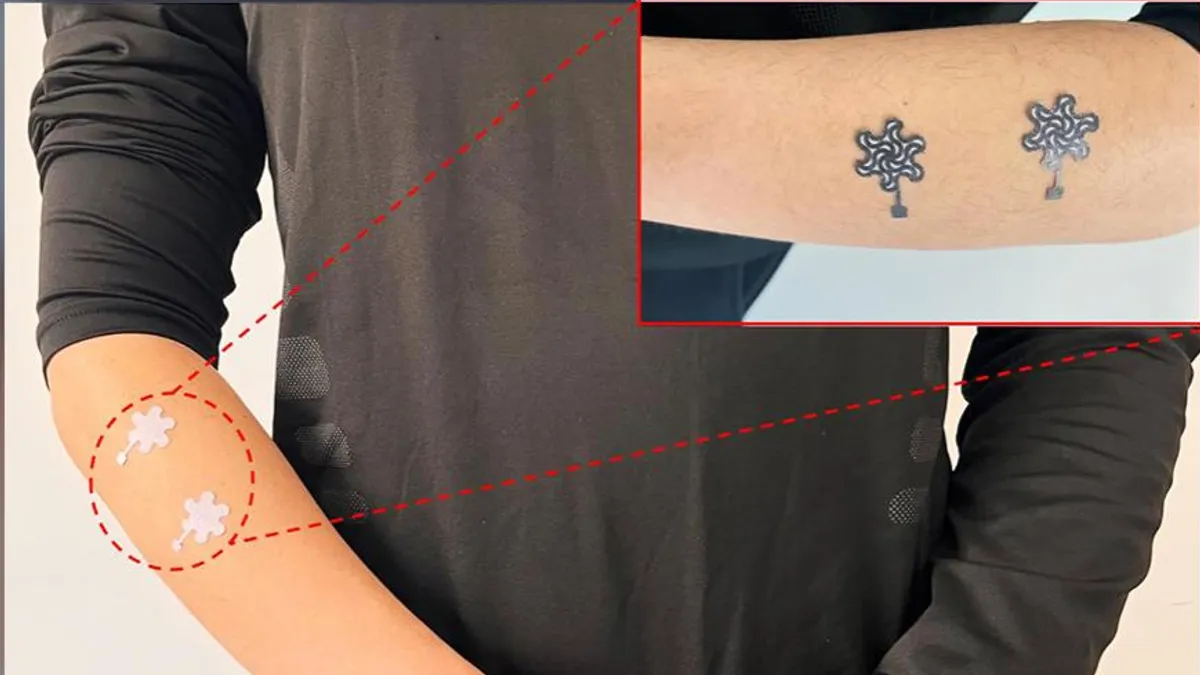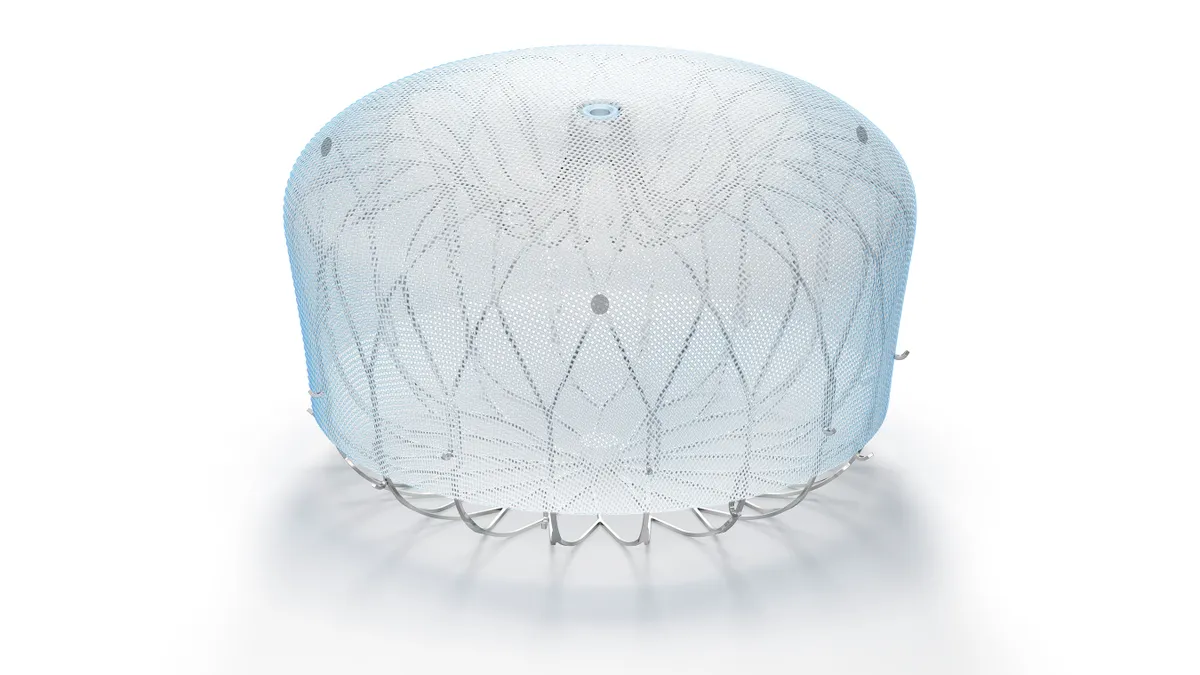Dive Brief:
- Scientists at Penn State University have created a low-cost, disposable “pencil-on-paper” technology that could be used to detect cardiopulmonary disease and treat inflammation.
- Writing in Chemical Engineering Journal, the researchers describe how they improved on earlier projects by making a material that is stretchable and practically waterproof.
- The team sees applications for the technology in population health, explaining how the low cost of the device makes it suitable for collecting data from large numbers of people.
Dive Insight:
Wearable electronics on the market today are mostly expensive devices designed for repeat use. Studies of conductive pencil patterns on cellulose paper have shown it is possible to create cheaper, disposable sensors, such as the “smart diapers” developed by a team at Penn State that detect and alert for wetness. However, the technology has limited stretchability and is easily affected by changes in the ambient environment.
Recently, the team behind the smart diapers published details of their work to overcome the limitations of existing pencil-on-paper sensor platforms. The researchers combined pencil-on-paper technology with a hydrophobic coating and stretchable structures to create a more versatile sensing platform.
Applying the silica hydrophobic coating resulted in a sensor that can tolerate exposure to moisture and, as such, is suitable for the targeted application of measuring gas molecules, temperature and electrical physiological signals. Similarly, the stretchable structures make it possible to wear the device on the skin.
The team added those enhancements without compromising the simple production process that makes pencil-on-paper technology suitable for population health monitoring, as Li Yang, co-corresponding author and former visiting scholar in the Penn State Department of Engineering Science and Mechanics, explained in a statement.
“With this sensor, you don’t need bulky equipment,” Yang said. “We use low-cost manufacturing approaches to make them accessible. The sensor is made of graphite material exfoliated from a pencil. So, the pencil material is really the sensing material because it's a conducting material.”
The collaborators showed the integrated temperature sensor and electrodes “can accurately detect temperature and electrophysiological signals to alert for adverse thermal effects and cardiopulmonary diseases.” The team also sees potential for the device to deliver thermal therapy and electrical stimulation to treat inflammation, infection and chronic wounds.










